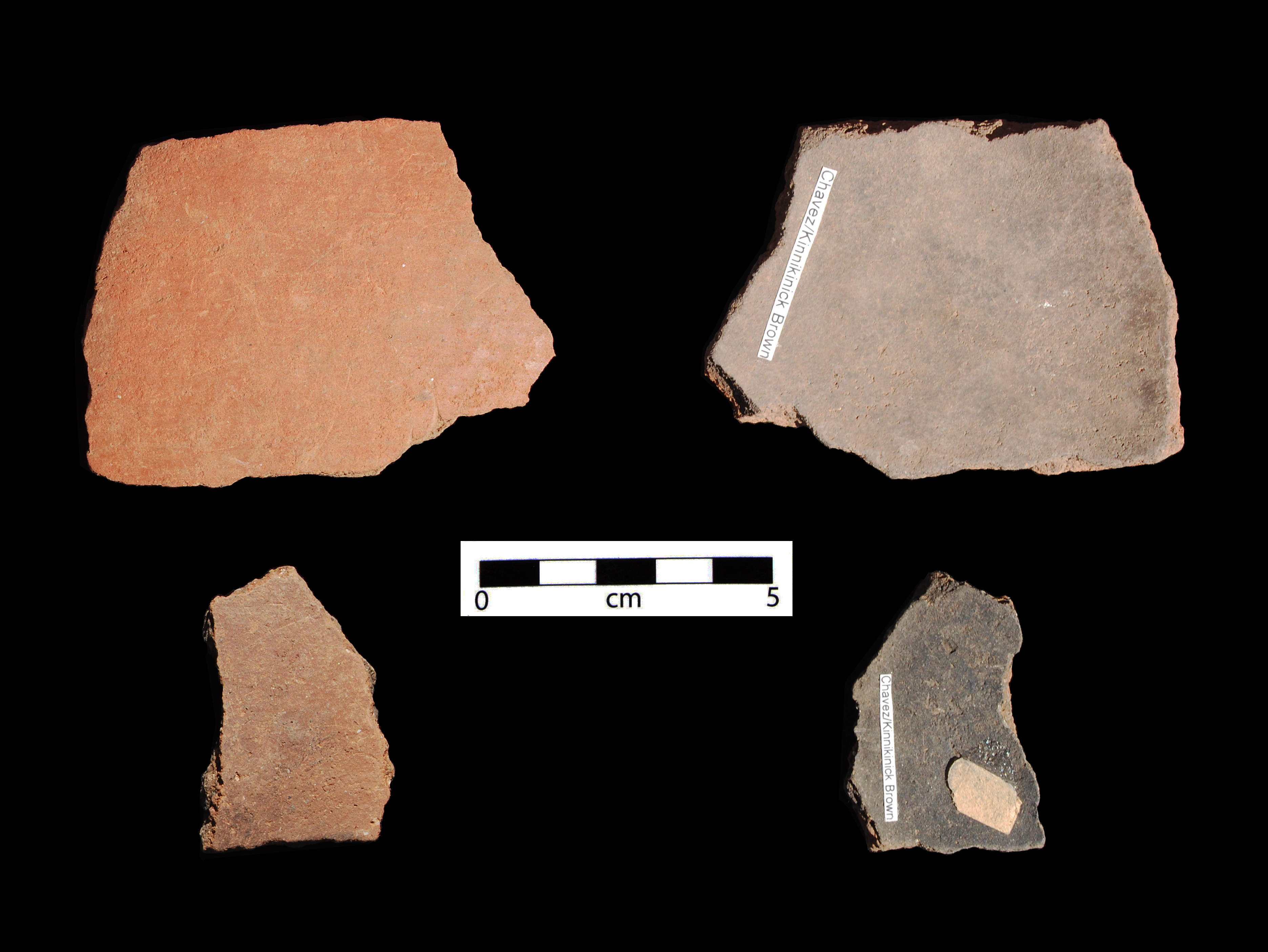Kinnikinnick Brown is a type of Alameda Brown Ware found on the east rim of Anderson Mesa in northern Arizona.
Archaeological Culture: Sinagua
Date Range: A.D. 1200-1400.
Construction: By paddle and anvil.
Firing: In an oxidizing atmosphere; fire clouds are common.
Core Color: Brown.
Carbon Streak: Sometimes.
Temper: Crushed basalt showing many green glassy olivine crystals similar to the rock that forms the rim of Anderson Mesa.
Surface Finish: Smooth and often porous when roots were present in the clay.
Surface Color: Red or brown.
Forms: Jars, sometimes with a Gila shoulder; rarely bowls.
Vessel Thickness: 3.6 to 9 mm.
Decoration: None.
Variants:
- Kinnikinnick Red – Same as Kinnikinnick Brown, except with a red slip. Occurs in bowl and jar form; bowls are sometimes smudged. Date range is also slightly different (A.D. 1130-1350).
- Chavez Brown – Same as Kinnikinnick Brown, except the temper grains are rounded; red slip is also sometimes present. Jar vessel thickness is 5 to 8.3 mm.
Comparisons: Kinnikinnick Red/Brown is easily confused with Sunset Red/Brown. Winona Brown and Tonto Red are also similar, but lack crushed basalt temper.
Compiled from the following sources:
Colton, Harold. (1958) Pottery Types of the Southwest. Museum of Northern Arizona Ceramic Series No. 3D. Flagstaff, Arizona.
Compiled by:
Meghann M. Vance, Northern Arizona University Anthropology Laboratories.

